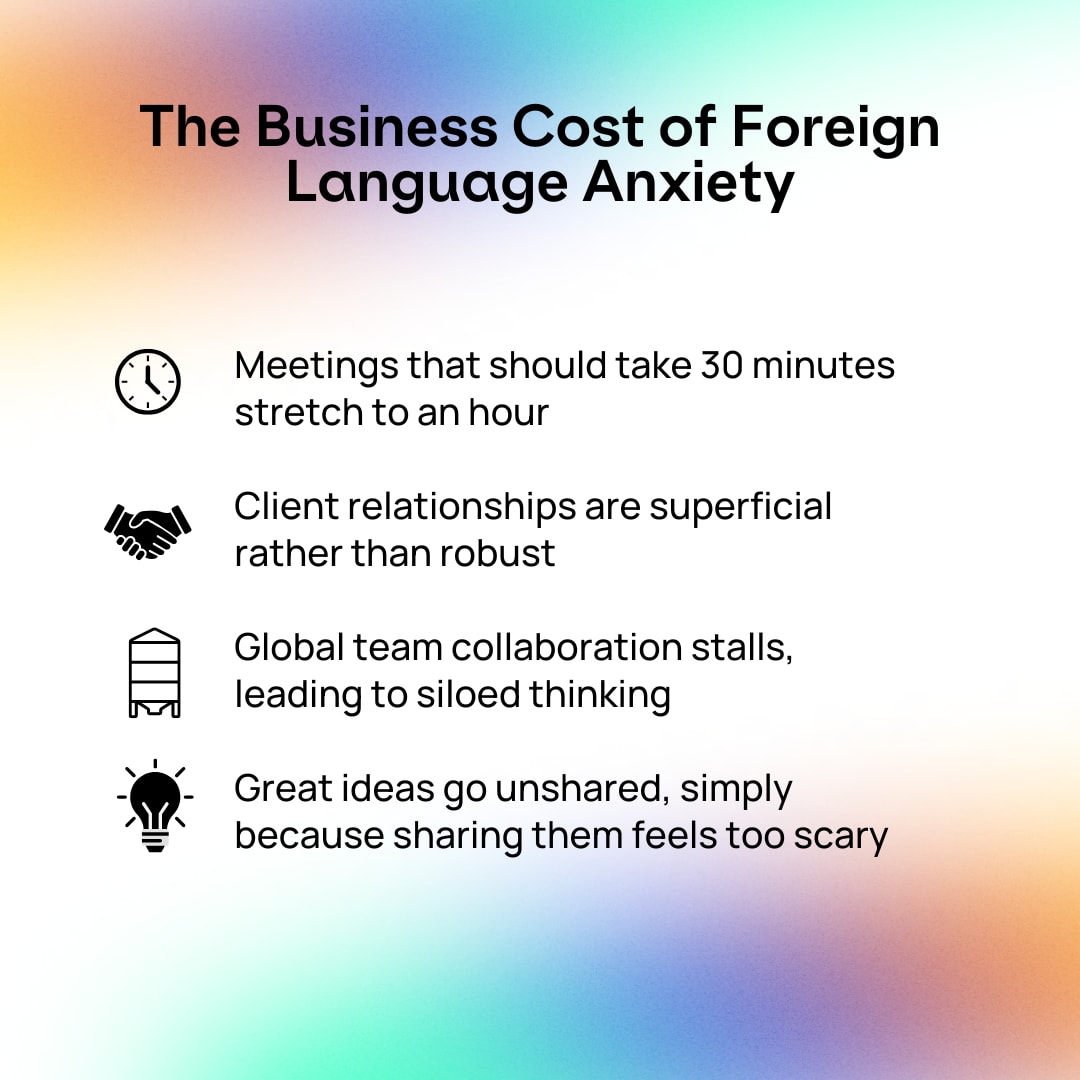Why Your Language Learners Are Afraid To Speak
The #1 culprit sabotaging your language training program: anxiety.
👋 New here? I'm Christian Rowe. Welcome to The IMMERSE Weekly - my collection of under-the-hood, research-informed, hot-takes explaining how global organizations can overcome the engagement crisis in corporate language training with AI and XR.
Anxiety is quietly undermining your training investment.
Picture this:
A high-performing team member has completed hours and hours of language training but when it comes time to speak in a client-facing meeting - they freeze. This employee got top scores in their e-learning, but when it matters most they fumble their words as insecurity rises and confidence plummets.
If this sounds familiar to you, you're not alone.
Freezing up isn’t caused by lack of language knowledge—it's Foreign Language Anxiety (FLA), a psychological barrier that can affect even your strongest team members.
Defined as “worry and negative emotional reaction aroused when learning or using a second language,” FLA has a significant negative impact on language achievement.
Why Your Team Members Freeze 🥶
Why aren't your employees speaking up in their target language? The research points to several factors:
😰 Fear of mistakes - Grammar errors, mispronunciations, and wrong word choices trigger both embarrassment and worries about not being understood
😰 Real-time pressure - Unlike email, conversations don't give listeners time to pause and process the information they’re receiving
😰 Translation fatigue - Thinking in their native language and then translating requires exhausting mental gymnastics and often leads to errors
😰 Practice deficit - Traditional programs prioritize grammar and reading over verbal communication, even though real-life conversations are highly challenging
😰 Cultural uncertainty - Even perfect grammar and extensive vocabulary aren’t enough to navigate the cultural nuances of a business interaction
If your language training solution fails to address these factors, you’ll end up with knowledgeable learners who become paralyzed when it’s time to actually speak.
How FLA is Negatively Impacting Your Bottom Line
When employees avoid speaking, the ripple effects hit your bottom line:
Meetings that should take 30 minutes stretch to an hour
Client relationships are superficial rather than robust
Global team collaboration stalls, leading to siloed thinking
Great ideas go unshared simply because sharing them feels too scary
Breaking the Anxiety Barrier
The solution doesn’t lie in extra sentence practice or watching movies in the target language. It comes from finding a language training provider who creates safe practice environments that get learners over their fear of speaking.
Immersive simulations and personalized AI are key elements. Here’s why:
Immersion: The Psychological Shield
Research shows that learning in virtual environments significantly reduces Foreign Language Anxiety.
✅ Learners feel shielded by their avatars, reducing the “stage fright” of speaking in front of others
✅ Rich virtual environments engage learners’ attention, distracting them from their self-consciousness
✅ Role playing realistic scenarios builds confidence that transfers over to the real world
Personalized AI: The Patient Practice Partner
When properly designed, GenAI conversation partners transform speaking practice.
✅ Learners have judgment-free interactions at the perfect difficulty level
✅ Personalized feedback on pronunciation and phrasing speeds up progress
✅ Performance scores let learners see how much they’re improving and where to focus their practice
Safe Conversation Practice Is the Key to Social Confidence
When learners practice with peers worldwide, they build global communication skills.
✅ Talking to learners from around the world familiarizes them with diverse accents and speaking styles
✅ Low-stakes casual conversation opportunities help break the translation habit
✅ Genuine cultural exchanges build intercultural competence
A New Approach to Speaking Confidence
Research shows that 99% of learners experience significantly lower Foreign Language Anxiety during training in IMMERSE.
Why? Because our platform combines VR immersion, AI-guided practice, and social engagement in one cohesive experience.
The result is employees who confidently lead meetings, join global calls, and build relationships across borders.
Want language training that actually breaks through the fear barrier? Book a personalized demo.
Hope this was helpful. See you next week,
Christian



